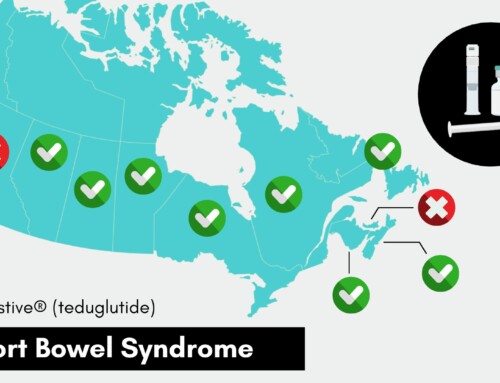
Changes to How Drugs Are Priced in Canada
and Why This Should Matter to You
Update: On June 29, 2021, Health Canada has, again, postponed the implementation date of the new PMPRB changes from July 1, 2021 to January 1, 2022 in recognition of the ongoing challenges brought by the COVID-19 pandemic.
In December 2020, the Gastrointestinal Society released the Patented Medicine Prices Review Board: Report on the Changes and Their Impact on Canadians (PMPRB Impact Report), detailing how access to medicines is changing as of July 1, 2021. These changes are of utmost concern to us and we believe you should pay attention.
I have experience in this process, as I sat on the PMPRB Steering Committee on Modernization of Price Review Process Guidelines 2018-2019.1 Unfortunately, while they listened to the patient input from the GI Society (and the Best Medicines Coalition, which I also represented), Myeloma Canada, and the Canadian Organization for Rare Disorders (CORD), they ignored it.
Why does this matter to Canadians now?
Canada is the only country in the world with a regulator that caps patented medicine prices. The PMPRB has been around since 1987, with guidelines as to how it calculates a maximum price. However, the release of the final PMPRB Modernization Guidelines on October 23, 2020 revealed serious issues with the changes they propose. Also, after the PMPRB sets a maximum price, Canada and its provinces and territories already have other bodies that further push the price of a medicine lower.
Experts in the Canadian healthcare system, especially patient groups, say this “modernization” could seriously affect patient access to lifesaving and life-altering drugs. When the government forces the price of a medicine too low, it might no longer be viable for the companies to sell that medicine in Canada. This includes both new and existing drugs, which could disappear from the Canadian market, so they will no longer be available, even if you have private coverage. This also affects the thousands of jobs and economic activity the research and development pharmaceutical sector bring. In 2018, the sector supported more than 100,000 full-time equivalent jobs and contributed close to $15 billion in economic value to Canada.2 However, pricing ambiguity has already begun impacting drug manufacturers, who are not bringing their drugs to Canada, and this concern cascades right down to the end user of medications – us!
The PMPRB guideline changes are generating uncertainty. We all agree that medicines should be affordable, so we believe that the first step the PMPRB is taking is a good one, which is to change the basket of comparator countries when determining a fair price. What we don’t agree with is the further complex and confounding levels of adjustments they propose that will affect our access to valuable treatments. We believe there should be a balance between price and value. The proposed guidelines do not embrace this.
In our full report, we explore the imminent changes to the guidelines, provide background, and explain the potential effects of these changes. We hope you take the time to read about them now, before it’s too late. We identify the ways in which healthcare systems interact with our lives, as we use prescription medicines, medical devices, participate in clinical trials, and access patient support programs. We also provide real world examples to show the effects of these policies on Canadians today.
What can you do?
Join us in our advocacy. Tell your family, friends, and peers of these impending changes. Click here to learn more, follow us on our social media platforms, and share our short videos on this topic, so others will see that we all need to take action to save our medications from disappearing.






